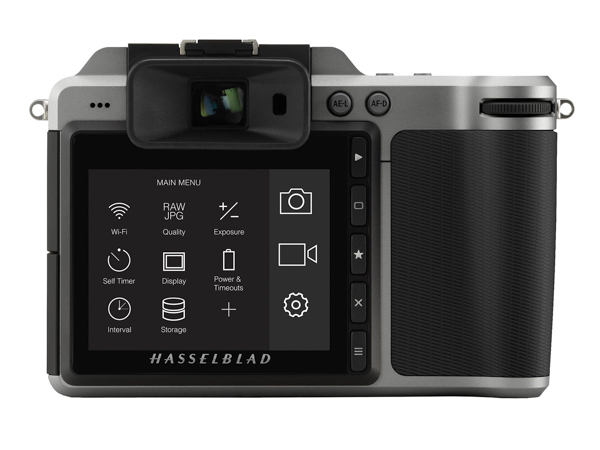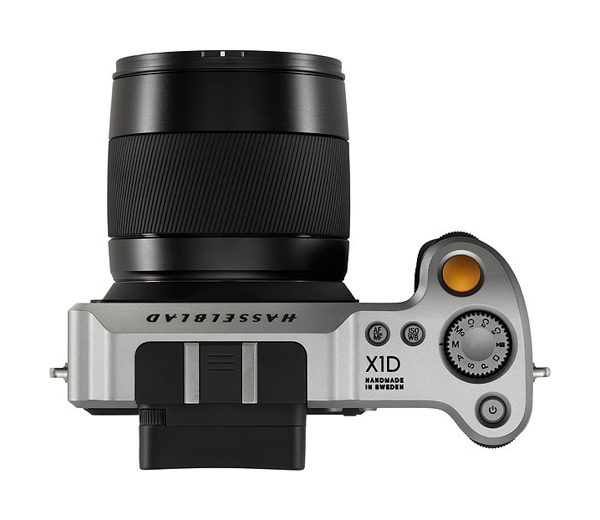
Swedish manufacturer Hasselblad has introduced the the X1D – the world’s first medium-format camera based on a mirrorless design.
The camera weighs half that of conventional medium-format systems and as Hasselblad reaches its 75th birthday it marks somewhat of a change in direction after spending the past few years focusing on developing its H5 and H6 medium-format lines for professional users.
The camera inserts itself at the top of the Mirrorless Camera range and will have definite consumer appeal, but the X1D has a lot to offer professional users too – handcrafted with a high quality metal chassis, weather sealing and of course premium image quality. More portable than other formats, Hasselblad claims its arrival, “makes medium format photography available to a new generation of Hasselblad users”.
The X1D is based around a 50MP medium-format CMOS sensor measuring approx 44×33mm with enhanced detail enabled by a lack of anti-aliasing filter. Any fans of the Nikon D810 and Canon 5DsR will be at home with this technology only recently adopted by DSLR makers. Images can be captured as RAW files (lossless compression), JPEGS or both; and with 16-bit colour depth, a 14-stop dynamic range and an ISO scope of 100-25,600, users can expect images with smooth tonal graduation and great clarity in all lighting conditions.

The camera is also capable of capturing videos although, in contrast to the many 4K-enabled cameras now available, its maximum resolution here is Full HD (1920×1080). A port is also provided both external microphones, as is a headphone socket for the purpose of audio monitoring.
The camera offers an extremely responsive 3″, 920k-dot touchscreen, plus a clear OLED electronic viewfinder. Physical buttons are kept to a minimum resulting in a very attractive and ergonomic style.

The X1D’s top plate features a conventional mode dial to select exposure mode, the custom setting bank or video. The camera’s hotshoe is compatible with Nikon flashes.

The X1D weighs just 725g with its battery included, which is lighter than most full-frame DSLRs currently on the market, and measures 150x98x71mm. It features dual SD-card slots, alongside a Type-C USB 3.0 port.
The camera can be tethered to a computer through its USB port, although Wi-Fi has also been included for cable-free control. The further addition of a GPS system will please those wanting to travel with it, although the maximum burst rate of 2.3fps may discourage action photographers.
Users can choose from spot, centre-weighted and CentreSpot patterns for metering, while the autofocus system employs a contrast-detect AF system with a manual override.

An accompanying XCD line of autofocus lenses has been launched alongside the camera, and two of these – the 45mm f/3.5 XCD and a 90mm f/4.5 XCD – should be available in time for the X1D’s late-August release. A further 30mm lens is expected to arrive before Photokina comes around. These lenses integrate leaf shutters and allow for shutter speeds as fast as 1ƒ/2000sec to be used, with flash sync at all speeds. Hasselblad’s HC and HCD lenses will also be compatible via an adapter.
Hasselblad X1D: Hands-on review
We were given the opportunity to get our hands on one of the few pre-production samples of the X1D currently available, along with one of the new 45mm f/3.5 XCD lenses. As final firmware has not been made available yet, all comments refer to this pre-production sample.

With the 45mm f/3.5 XCD lens and hood mounted, the X1D might appear about the same size as other medium format cameras in the hands, but the difference in weight is noticeable; it’s certainly light enough to be held for extended periods of time without encountering any fatigue. The grip may not be as sculpted as those on similarly sized DSLRs or CSCs, but it still provides ample room to get good purchase and fits well in the hand.

It’s a welcome find that the power switch is as accessible as it is – right in front of the rear command dial on the top plate. Another nice touch here is the design of the mode dial (pictured below); the whole dial pops up from the top plate for changing mode and recedes into the top plate when pressed down. This prevents any inadvertent change to a different setting – a common bugbear on cameras with similarly placed dials – and also helps to keep the top plate smart and streamlined.

This mode dial also provides quick access to three custom options, as well as the camera’s Full HD video recording function. Hasselblad has elaborated on the the camera’s video-recording abilities, stating that the reason the camera does not record 4K video was not a choice made by Hasselblad as such, but simply a limitation of the 50MP Sony sensor inside the camera. The Phocus 3.1 program that will ship with the software as standard will also provide support for video files from the camera in addition to still images.

Two controls next to the mode dial each have dual functions, one accessing ISO and White Balance and the other to change between auto and manual focus options. These controls work in conjunction with the command dials at the front and back of the camera, with this setup mirroring that of many DSLRs with dual command dials.
Those coming from DSLRs or Compact System Cameras are likely to get something of a surprise upon using the X1D for the first time. Like the recently launched Leica SL, Hasselblad has chosen to keep physical controls to a minimum on the rear, with control largely coming through the five buttons that line the display’s right-hand-side. Their basic functions are explained by icons, but these are paired with additional controls on screen so that they serve further purposes.

The GUI is, without question, one of the clearest on any camera currently available. Although there are differences, much of this appears very similar to the interface on the Hasselblad H6D that was announced earlier in the year. The Main Menu bears clearly labelled functions and graphics – no cryptic markings or abbreviations as on some other models – and everything appears to be logically segregated.

The display’s size also allows for key exposure information, such as aperture and shutter speed, to be much larger than expected, while a handful of icons that show things like focusing mode, white balance and battery life, sit alongside these. Unlike the H6D the X1D lacks a top-plate LCD, so it’s good to have all this information as clear and visible as possible.

The display also offers touch control and the way this has been integrated deserves special mention. You can, for example, simply swipe your finger across the display to change things like aperture or sensitivity, and checkboxes feature elsewhere to allow for simple, one-touch selection.

Hasselblad has also sought to make the camera behave much like a tablet or smartphone, with the screen responding to double-tap motions (particularly useful when scrutinising fine details when playing back images). The screen’s 920k-dot resolution may not appear to be as high as those on many current DSLRs and Compact System Cameras on paper, although it proves to be clear enough to allow for fine detail and focus to be checked with accuracy. Not only that, but in the conditions under which we were able to test the camera its viewing angle appeared to be excellent.

The camera’s viewfinder is backed by an eyecup, with a proximity sensor integrated in one side to alternate between showing the feed inside the viewfinder and on the main rear display. The depth of this eyecup means that the user’s face is set further away from the LCD than on other models, and this is particularly useful here as it prevents the screen from being smudged faster than would otherwise be the case through touch-operation alone.

The viewfinder boasts a contrast ratio of 230:1 and 24 bit colour reproduction, and its 2,36million-dot resolution means that the scene can be viewed with great clarity. One thing we noticed was a temporary drop in sharpness as the camera acquires focus, although this may only be specific to pre-production samples.

